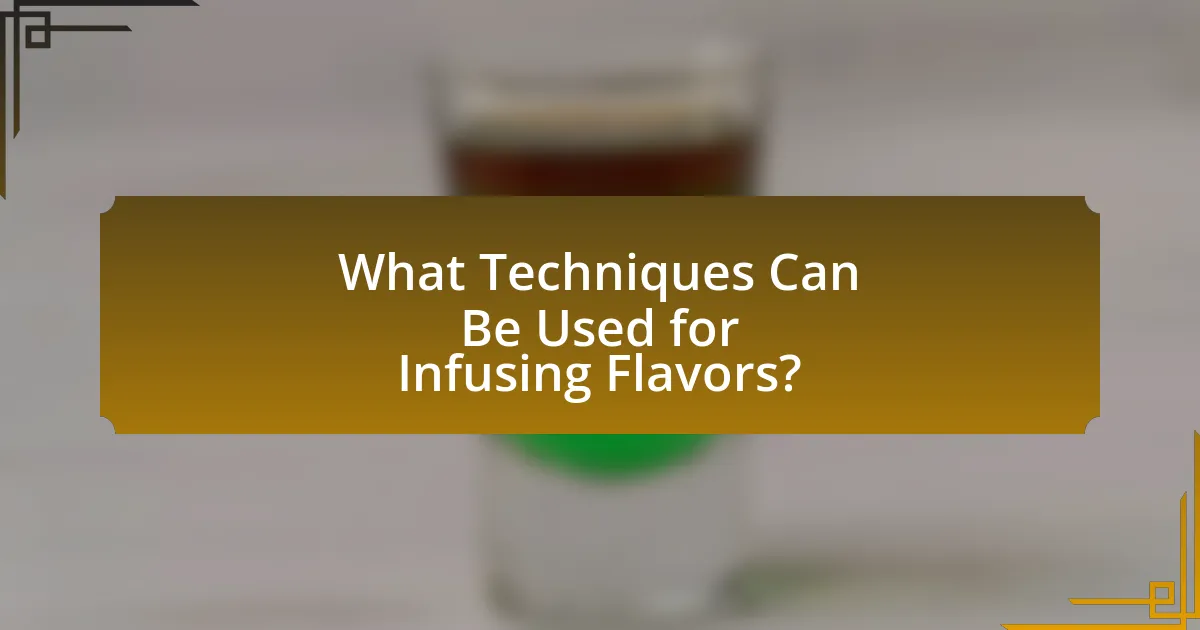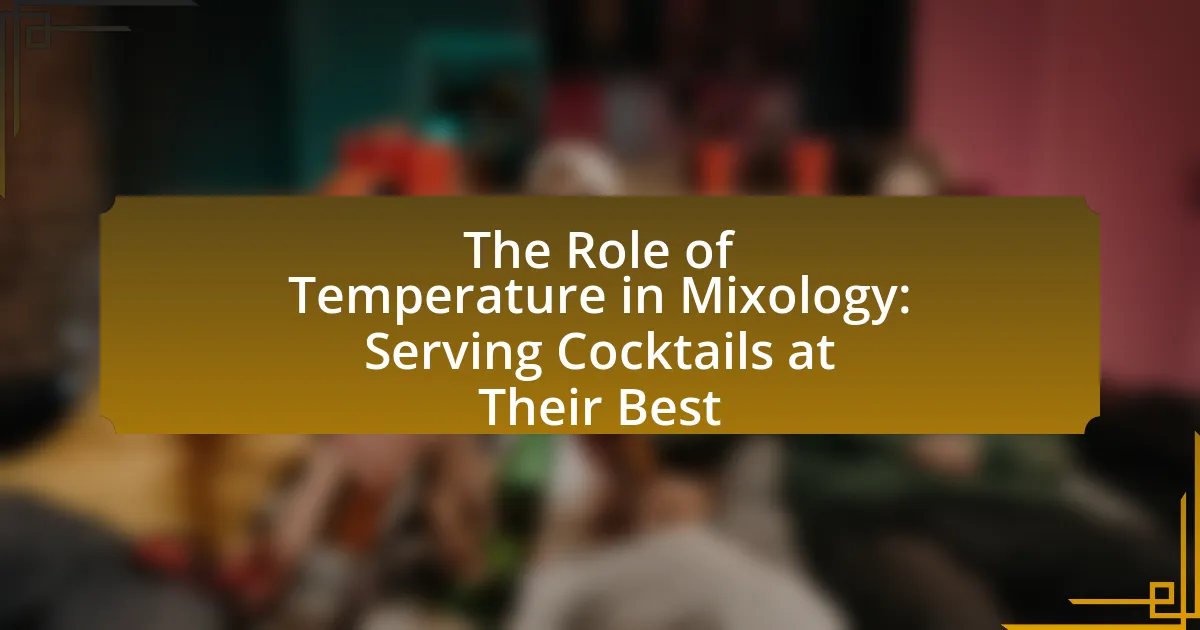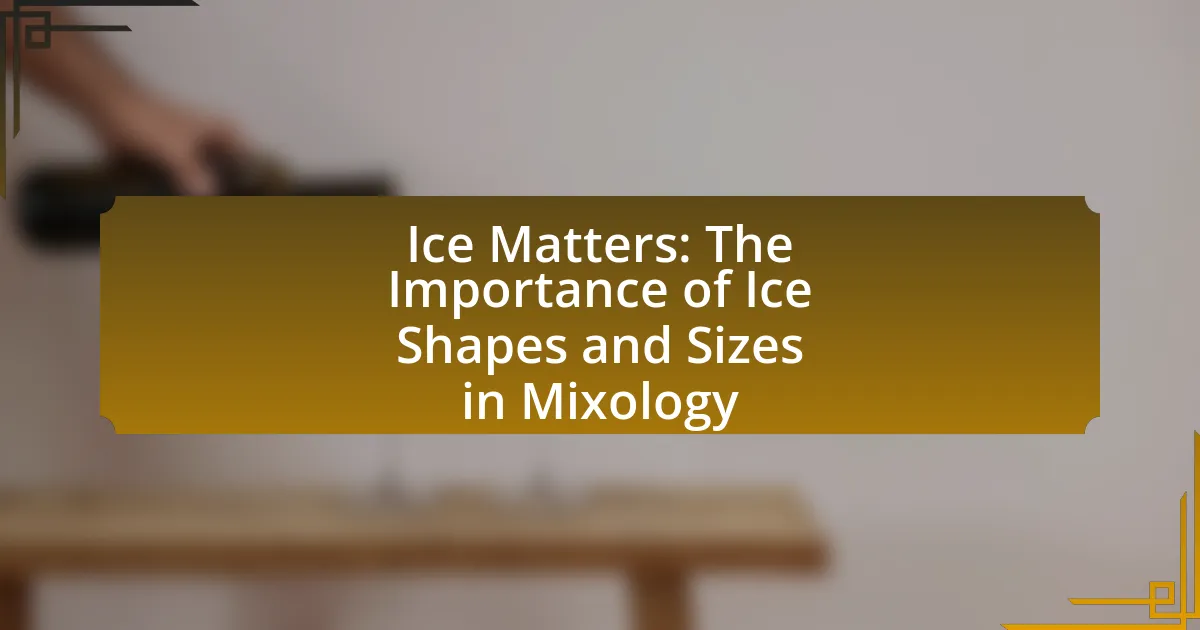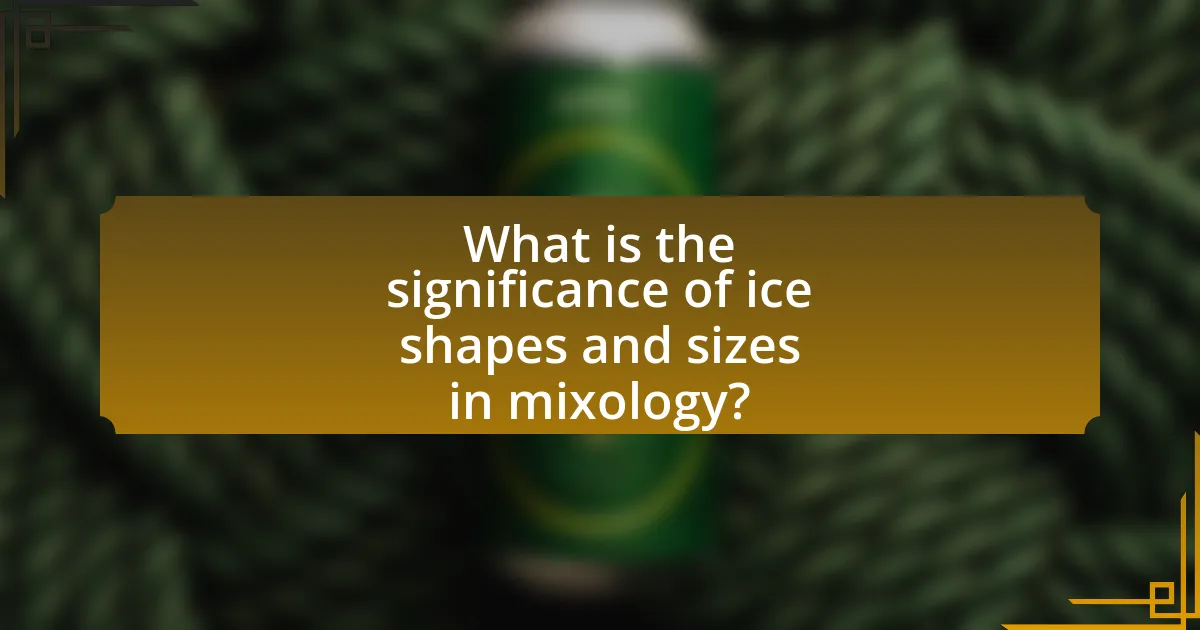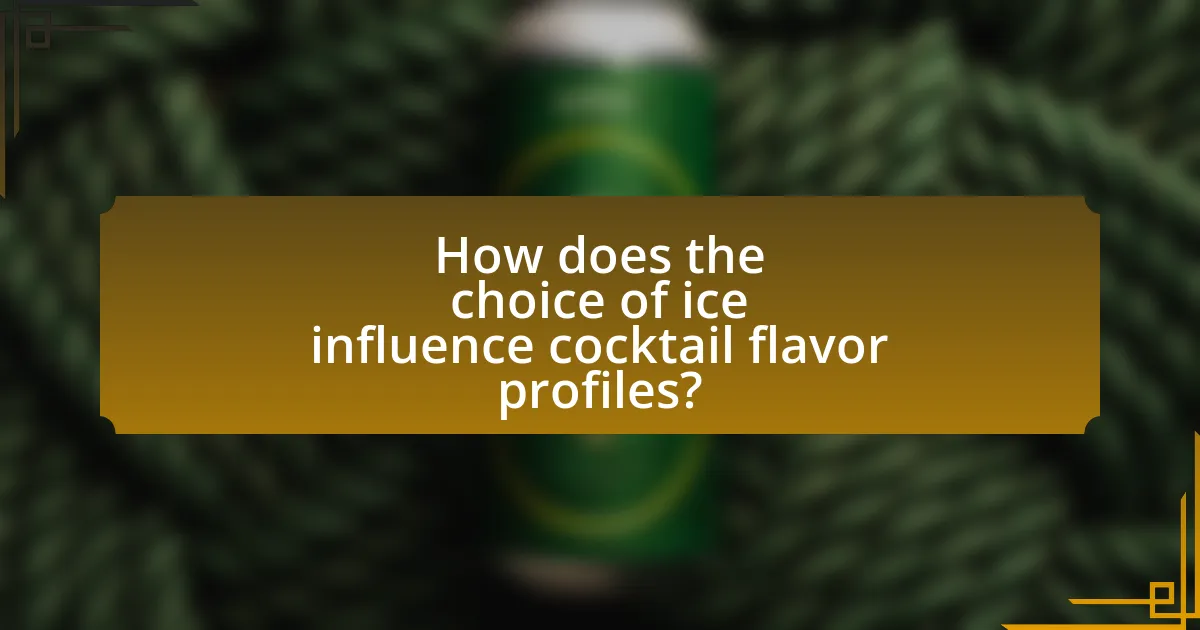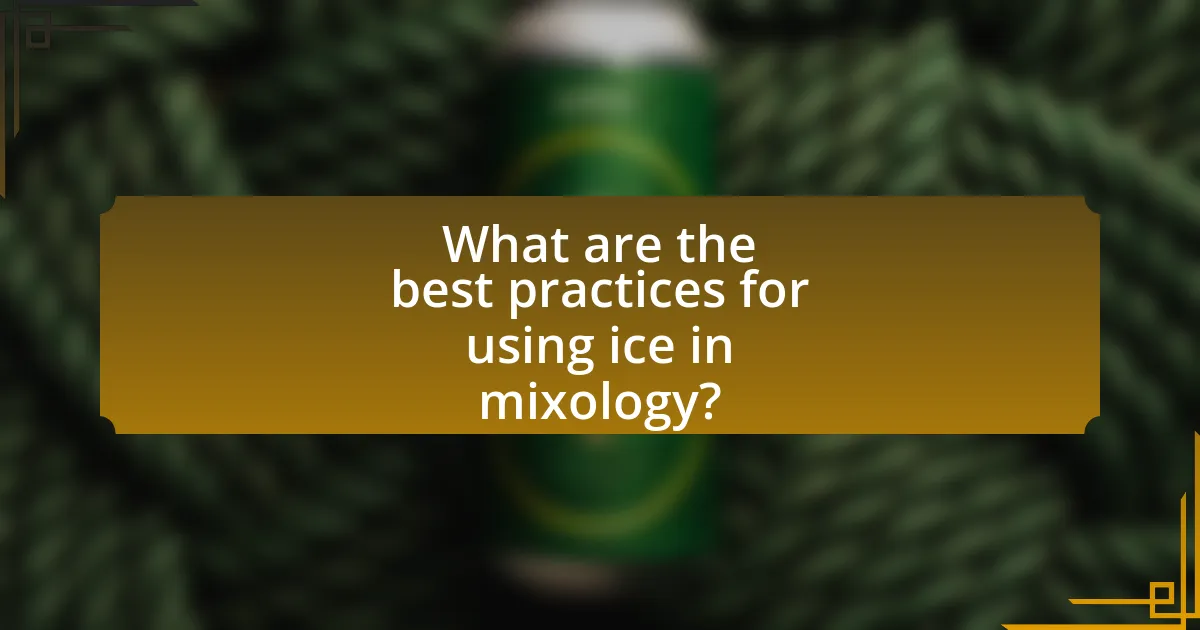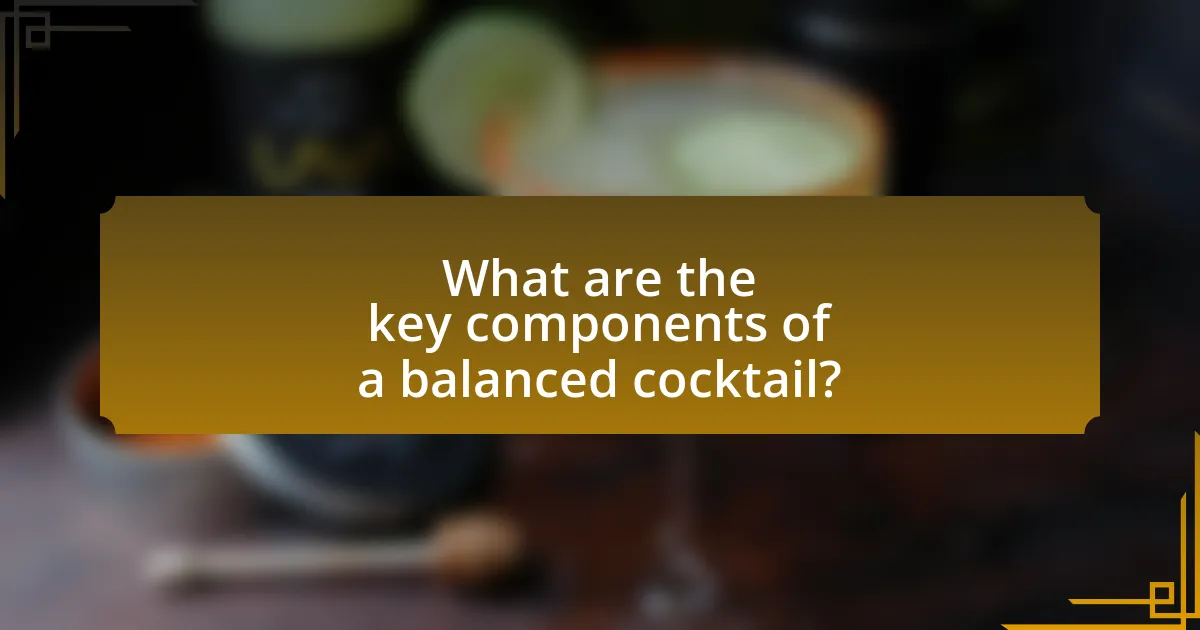Bitters are concentrated flavoring agents derived from various herbs, spices, and botanicals, typically infused in alcohol, and play a crucial role in enhancing the complexity and depth of cocktails and culinary dishes. This article explores the significance of bitters, their historical origins, and their evolution from medicinal tinctures to essential components in modern mixology. It details how bitters enhance flavors in cocktails, the different types available, and best practices for their effective use, including pairing with specific spirits and incorporating them into non-alcoholic beverages. Additionally, the article highlights common mistakes to avoid and creative ways to experiment with bitters to elevate the overall tasting experience.

What are Bitters and Why are They Important?
Bitters are concentrated flavoring agents made from various herbs, spices, and botanicals, typically infused in alcohol. They are important because they enhance the complexity and depth of cocktails and culinary dishes, balancing sweetness and adding aromatic qualities. Historically, bitters have been used in medicinal applications, with origins tracing back to ancient civilizations, and they play a crucial role in modern mixology by providing essential flavor profiles that elevate beverages.
How do Bitters enhance flavors in cocktails?
Bitters enhance flavors in cocktails by adding complexity and depth through their concentrated flavor profiles. These aromatic infusions, typically made from herbs, spices, and botanicals, stimulate the palate and balance sweetness with bitterness, creating a more rounded taste experience. For example, Angostura bitters, a popular choice, contains a blend of over 40 different ingredients, which contribute to its unique flavor and ability to complement various spirits. This complexity can elevate a simple cocktail, making it more intriguing and enjoyable.
What types of flavors do Bitters contribute?
Bitters contribute a range of flavors including herbal, spicy, citrus, and floral notes. These flavors arise from the infusion of various botanicals, such as roots, herbs, and spices, which are steeped in alcohol. For example, aromatic bitters often feature ingredients like gentian root, which adds a bitter herbal quality, while orange bitters incorporate citrus peels for a bright, zesty flavor. The complexity of bitters enhances cocktails by balancing sweetness and adding depth, making them a crucial component in mixology.
How do Bitters interact with other ingredients?
Bitters interact with other ingredients by enhancing flavors, balancing sweetness, and adding complexity to cocktails and dishes. The aromatic compounds in bitters can elevate the overall taste profile, making them a crucial component in mixology. For instance, the addition of aromatic bitters to a sweet cocktail can counterbalance the sugar, creating a more harmonious flavor experience. Studies have shown that bitters can stimulate the palate, increasing the perception of flavors in food and beverages, which is why they are often used in small quantities to achieve a significant impact.
What is the history and origin of Bitters?
Bitters originated in the 16th century as medicinal tinctures made from herbs, spices, and other botanicals. Initially, they were used for their therapeutic properties, believed to aid digestion and alleviate various ailments. The first commercial bitters, Angostura Bitters, was created in the early 19th century by Johann Gottlieb Benjamin Siegert in Venezuela, which popularized the use of bitters in cocktails. By the late 1800s, bitters became a staple in bars and homes, contributing to the flavor complexity of mixed drinks. The historical significance of bitters is underscored by their inclusion in classic cocktail recipes, reflecting their evolution from medicinal to culinary essentials.
How have Bitters evolved over time?
Bitters have evolved from medicinal tinctures in the 19th century to essential cocktail ingredients in modern mixology. Initially, bitters were created for their health benefits, often containing herbs, spices, and alcohol to aid digestion and treat ailments. Over time, as the cocktail culture grew, particularly during the Prohibition era in the United States, bitters transitioned into flavoring agents that enhance the complexity of drinks. Today, the market features a wide variety of bitters, including artisanal and craft options, reflecting diverse flavors and ingredients, which cater to the evolving tastes of consumers and bartenders alike.
What cultural significance do Bitters hold?
Bitters hold significant cultural importance as they have been integral to various culinary and medicinal traditions across the globe. Historically, bitters originated in ancient civilizations, where they were used for their digestive properties and as flavor enhancers in beverages. For instance, in the 19th century, bitters became a staple in American cocktail culture, symbolizing the transition from medicinal tonics to essential cocktail ingredients, as seen in classic drinks like the Old Fashioned and the Manhattan. This evolution reflects broader social trends, including the rise of mixology and the appreciation for complex flavors in gastronomy.

How to Use Bitters Effectively?
To use bitters effectively, add a few dashes to cocktails or beverages to enhance flavor complexity. Bitters contain concentrated herbal extracts that can balance sweetness and add depth to drinks. For example, classic cocktails like the Old Fashioned or Manhattan benefit from the addition of aromatic bitters, which can elevate the overall taste profile. Studies show that bitters can stimulate digestion and enhance the sensory experience of drinking, making them a valuable ingredient in both cocktails and culinary applications.
What are the different types of Bitters available?
The different types of bitters available include aromatic bitters, citrus bitters, herbal bitters, and fruit bitters. Aromatic bitters, such as Angostura, are commonly used in cocktails for their complex flavor profiles derived from various herbs and spices. Citrus bitters, like orange or lemon bitters, add a zesty note to drinks and enhance freshness. Herbal bitters, which can include ingredients like gentian root or wormwood, provide a more earthy and botanical flavor. Fruit bitters, such as cherry or peach bitters, introduce sweetness and fruitiness to cocktails. Each type serves a unique purpose in mixology, contributing to the depth and complexity of beverages.
How do aromatic Bitters differ from citrus Bitters?
Aromatic bitters primarily feature a complex blend of herbs, spices, and botanicals, while citrus bitters focus on the bright, zesty flavors derived from citrus peels and oils. Aromatic bitters often include ingredients like gentian root, cardamom, and cinnamon, which contribute to their deep, rich flavor profile, making them suitable for enhancing the complexity of cocktails. In contrast, citrus bitters are characterized by their refreshing and tangy notes, typically used to add a burst of brightness to drinks. This distinction is evident in their applications; aromatic bitters are commonly used in classic cocktails like the Old Fashioned, whereas citrus bitters are often found in lighter, more refreshing drinks like the Gin and Tonic.
What are some unique or specialty Bitters to explore?
Unique or specialty bitters to explore include lavender bitters, which offer floral notes ideal for cocktails like gin and tonics, and chocolate bitters, known for their rich, deep flavor that enhances drinks such as old fashioneds. Additionally, celery bitters provide a savory element, making them perfect for Bloody Marys, while orange bitters are classic for adding citrus complexity to various cocktails. These bitters are crafted with distinct botanicals and flavors, allowing for innovative mixology and enhancing the overall drinking experience.
How can Bitters be incorporated into various drinks?
Bitters can be incorporated into various drinks by adding a few dashes to cocktails, enhancing flavor complexity and depth. For example, in classic cocktails like the Old Fashioned, Angostura bitters are essential for balancing sweetness and adding aromatic notes. In a Manhattan, bitters complement the whiskey and vermouth, creating a well-rounded profile. Additionally, bitters can be used in non-alcoholic beverages, such as sparkling water or mocktails, to introduce a sophisticated flavor element without alcohol. The use of bitters dates back to the 19th century, where they were originally created for medicinal purposes, showcasing their long-standing role in enhancing drink flavors.
What are classic cocktails that utilize Bitters?
Classic cocktails that utilize bitters include the Old Fashioned, Manhattan, and Sazerac. The Old Fashioned combines whiskey, sugar, and bitters, creating a balanced drink that dates back to the early 19th century. The Manhattan, made with whiskey, sweet vermouth, and bitters, has been a staple since the late 1800s, showcasing the complexity that bitters can add. The Sazerac, originating from New Orleans, features rye whiskey, sugar, absinthe, and bitters, highlighting the unique flavors that bitters contribute to cocktails. Each of these drinks exemplifies the essential role of bitters in enhancing flavor profiles and depth in classic mixology.
How can Bitters be used in non-alcoholic beverages?
Bitters can be used in non-alcoholic beverages to enhance flavor complexity and add depth. By incorporating just a few dashes of bitters, which are concentrated herbal extracts, drinks like sodas, mocktails, or even water can gain a sophisticated taste profile. For instance, adding aromatic bitters to tonic water creates a more nuanced flavor experience, while citrus bitters can brighten up fruit juices. The use of bitters in non-alcoholic drinks is supported by the fact that they have been traditionally used in cocktails to balance sweetness and acidity, making them equally effective in non-alcoholic contexts.

What are the Best Practices for Using Bitters?
The best practices for using bitters include starting with small amounts, as they are highly concentrated flavor enhancers, and gradually increasing the quantity to achieve the desired taste. Bitters should be added to cocktails or culinary dishes in moderation, typically two to three dashes, to avoid overpowering other flavors. Additionally, pairing bitters with complementary ingredients enhances the overall complexity of the drink or dish. For instance, aromatic bitters work well with whiskey, while citrus bitters can brighten gin-based cocktails. Using bitters in various applications, such as cocktails, sodas, or even savory dishes, can elevate flavors and provide depth. These practices are supported by the historical use of bitters in classic cocktail recipes, where they have been integral to balancing flavors since the 19th century.
How much Bitters should be used in a drink?
Typically, 2 to 3 dashes of bitters should be used in a drink. This amount is standard for most cocktails, as it provides the desired flavor enhancement without overwhelming the other ingredients. The use of bitters in this quantity is supported by cocktail recipes and bartending guidelines, which emphasize balance in flavor profiles.
What are the common mistakes to avoid when using Bitters?
Common mistakes to avoid when using bitters include overusing them, which can overwhelm the drink’s flavor profile, and underusing them, which can result in a lack of complexity. Additionally, failing to balance bitters with other ingredients can lead to an unharmonious drink. It’s also important to consider the type of bitters used; using the wrong variety for a specific cocktail can detract from the intended flavor. Lastly, neglecting to properly shake or stir the drink after adding bitters can prevent their flavors from integrating fully.
How can one balance Bitters with other flavors?
To balance bitters with other flavors, one can use complementary ingredients such as sweeteners, citrus, or herbal elements. Sweeteners like simple syrup or honey counteract the bitterness, while citrus juices, such as lemon or lime, provide acidity that enhances overall flavor harmony. Additionally, incorporating herbal or aromatic components, such as mint or rosemary, can create a more rounded profile. This approach is supported by the principle of flavor balancing in culinary practices, where contrasting flavors enhance the overall taste experience.
What tips can enhance the use of Bitters in cocktails?
To enhance the use of bitters in cocktails, start by using them sparingly, as a few dashes can significantly alter the flavor profile without overwhelming the drink. Bitters are concentrated flavor extracts, often made from herbs, spices, and botanicals, which means their potency requires careful measurement. For example, classic cocktails like the Old Fashioned or Manhattan traditionally include two to three dashes of aromatic bitters, which balance sweetness and add complexity. Additionally, experimenting with different types of bitters, such as orange, chocolate, or herbal varieties, can introduce unique flavors that complement specific spirits and mixers. This approach allows for creativity while maintaining the integrity of the cocktail.
How can Bitters be paired with specific spirits?
Bitters can be paired with specific spirits to enhance flavor profiles and create balanced cocktails. For example, aromatic bitters complement whiskey by adding depth and complexity, while citrus bitters work well with gin, brightening its botanical notes. Additionally, herbal bitters can enhance the flavors of rum, providing a contrasting layer to its sweetness. The use of bitters in these combinations is supported by the classic cocktail recipes that have stood the test of time, such as the Old Fashioned with whiskey and aromatic bitters, which showcases how bitters can elevate the overall drinking experience.
What are some creative ways to experiment with Bitters?
Creative ways to experiment with bitters include incorporating them into culinary dishes, using them in non-alcoholic beverages, and creating unique cocktail recipes. For instance, adding aromatic bitters to sauces or marinades can enhance flavor complexity, as demonstrated by chefs who use them to deepen the taste of meats and vegetables. Additionally, bitters can be used in mocktails, where a few dashes can elevate the drink’s profile without alcohol, appealing to a broader audience. Furthermore, mixologists often experiment by blending different types of bitters, such as orange and chocolate, to create signature cocktails that surprise the palate. These methods showcase the versatility of bitters in both food and drink, allowing for innovative flavor combinations.
How can Bitters contribute to a more complex flavor profile?
Bitters enhance a more complex flavor profile by introducing a range of aromatic compounds that balance sweetness and acidity in beverages and dishes. These concentrated flavor extracts, often made from herbs, spices, and botanicals, can add depth and nuance, transforming a simple drink or dish into a multi-layered experience. For example, the use of aromatic bitters in cocktails can create a contrast that highlights other flavors, making them more pronounced and interesting. Studies have shown that the inclusion of bitters can stimulate the palate, enhancing the overall tasting experience by engaging multiple taste receptors, thus validating their role in culinary and mixology practices.
What role do Bitters play in the overall tasting experience?
Bitters play a crucial role in enhancing the overall tasting experience by adding complexity and depth to flavors. They achieve this by introducing a range of bitter, aromatic, and herbal notes that can balance sweetness and acidity in beverages and dishes. For instance, the inclusion of bitters in cocktails can elevate the drink’s profile, making it more nuanced and enjoyable. Studies have shown that the presence of bitters can stimulate the palate, enhancing the perception of other flavors and aromas, thereby creating a more rounded tasting experience.
How can Bitters elevate simple drinks to gourmet status?
Bitters can elevate simple drinks to gourmet status by adding complexity and depth of flavor. These concentrated flavoring agents, typically made from herbs, spices, and botanicals, enhance the overall taste profile of a beverage, transforming it from basic to sophisticated. For example, a few dashes of aromatic bitters can introduce layers of flavor that complement the primary ingredients, creating a more balanced and intriguing drink. Historical usage of bitters in classic cocktails, such as the Old Fashioned or Manhattan, demonstrates their ability to elevate the drinking experience by harmonizing sweetness, bitterness, and aromatic notes, thus making even the simplest concoctions feel refined and gourmet.







